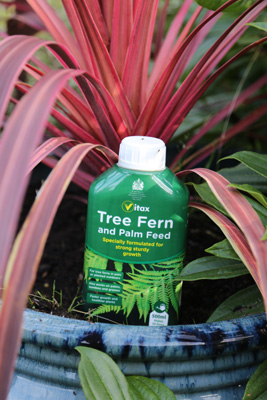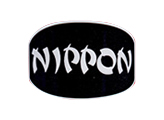Caring for Tree Ferns and Palms
 Tree ferns and palms are wonderfully architectural plants that make a dramatic and exotic statement in your garden, conservatory or home. The secrets of success are choosing the right plant for the situation, also getting to know what your plant needs to keep it in perfect condition.
Tree ferns and palms are wonderfully architectural plants that make a dramatic and exotic statement in your garden, conservatory or home. The secrets of success are choosing the right plant for the situation, also getting to know what your plant needs to keep it in perfect condition.
Tree ferns
The tree fern that is most widely available and commonly grown is Dicksonia antarctica, the Australian tree fern. The thick, fibrous, rich brown stem is topped with a broad shuttlecock of spreading fronds creating a palm-like appearance. Young plants, raised in pots, have little or no “trunk” and appear more like an ordinary evergreen fern. Mature specimens are often sold as dormant logs, fronds cut back, no pot and no roots. These are harvested from the wild under licence and will grow quite successfully when potted or planted in the open ground.
Tree ferns prefer a neutral to slightly acid soil, so pot in an ericaceous compost. The container does not need to be too large for growth, but it needs to be large enough, and heavy enough, to support the plant.
It does seem incredible that a “tree trunk” will root and grow, however tree ferns are quite unlike other woody stemmed plants in that a large part of the root system is actually in the stem. They will produce roots into the ground but they are never that extensive. Knowing that the roots are in the stem is the key to success: you must keep this part of the plant moist and watered as long as the plant is in growth.
In the wild the plants acquire their water from rainfall on the crown and fibrous trunk, and their nutrients from leaves and organic matter that get caught up in the crown. You need to replicate these conditions by watering with the correct mix of nutrients. During the growing season spray the crown and trunk regularly with water and once a week with a solution if Vitax Tree Fern and Palm Feed. This unique liquid fertilised is specifically formulated to provide the low concentration of nutrients these plants require on a regular basis.
When is the growing season and when do you feed?
That depends where you are, and whether your tree fern is outdoors or indoors.
In a sheltered courtyard garden in a mild area tree ferns will remain evergreen and continue to grow throughout the year. Growth slows in winter as the light level falls. Tree ferns like plenty of light, but not hot, direct sunlight.
 In colder areas tree ferns go dormant in winter, the fronds fade and are removed and the crown should be protected with straw or horticultural fleece. In this case watering and feeding can be withheld from late summer through to spring.
In colder areas tree ferns go dormant in winter, the fronds fade and are removed and the crown should be protected with straw or horticultural fleece. In this case watering and feeding can be withheld from late summer through to spring.
If you have a large glasshouse, conservatory or garden room tree ferns can be grown indoors as evergreen palms. Given enough light, growth continues throughout the year and occasional feeding during the winter moths is beneficial
Palms
A number of palms make wonderful houseplants, perfect for permanent, elegant, decoration in your home. The Kentia palm, Howea fosteriana, is the best and most successful long-term houseplant. The Areca palm, Dypsis lutescens, is more delicate and feathery in appearance, but can be more vulnerable. In all cases moderation is the secret of success. Position somewhere light, but out of direct sunlight, keep away from direct heat sources and cold draughts, water regularly, but not so often that the soil stays wet. Feed a little regularly, but do not overfeed. As with all houseplants more are killed by kindness that neglect.
Vitax Tree Fern and Palm Feed is the perfect fertiliser for indoor palms. Feed every one to two weeks from spring to late summer and once a month during winter.
Outdoor palms, grasses and bamboos
Vitax Tree Fern and Palm Feed is also ideal for outdoor palms, grasses and bamboos. Hardy palms palms, including cordylines, the cabbage palms, are great in courtyard gardens and containers to create that Mediterranean effect. They are long term subjects in pots and need a regular supply of the right nutrients to keep the foliage in perfect condition. This liquid fertiliser is ideal and prevents that annoying leaf spot and discolouration that these plants often suffer from.
You can also use it on any grasses and bamboos, in the open ground or in containers. It is especially beneficial in the first year after planting to aid establishment.
Andy McIndoe for Vitax
Your login details have been used by another user or machine. Login details can only be used once at any one time so you have therefore automatically been logged out. Please contact your sites administrator if you believe this other user or machine has unauthorised access.












